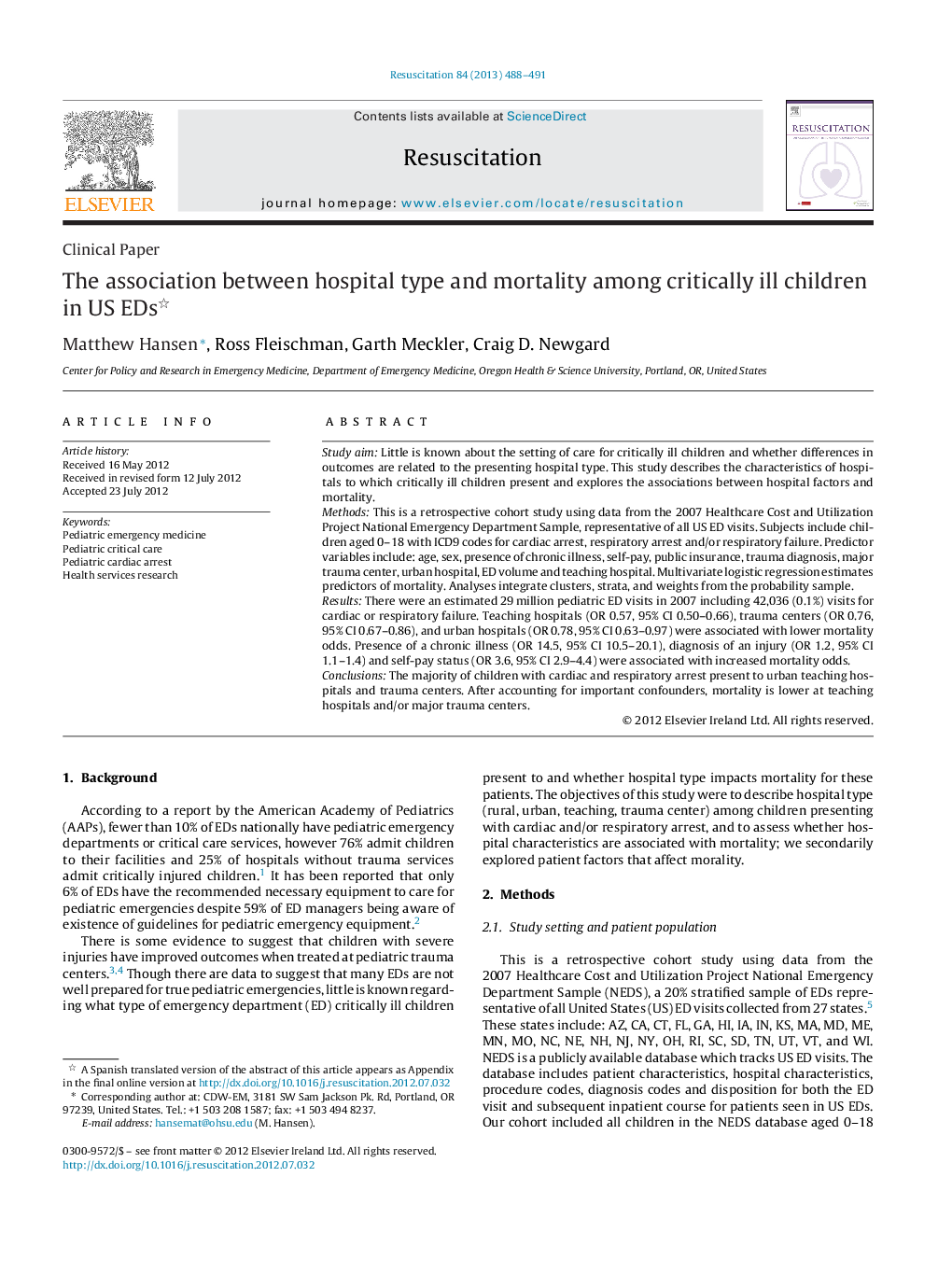| Article ID | Journal | Published Year | Pages | File Type |
|---|---|---|---|---|
| 3008118 | Resuscitation | 2013 | 4 Pages |
Study aimLittle is known about the setting of care for critically ill children and whether differences in outcomes are related to the presenting hospital type. This study describes the characteristics of hospitals to which critically ill children present and explores the associations between hospital factors and mortality.MethodsThis is a retrospective cohort study using data from the 2007 Healthcare Cost and Utilization Project National Emergency Department Sample, representative of all US ED visits. Subjects include children aged 0–18 with ICD9 codes for cardiac arrest, respiratory arrest and/or respiratory failure. Predictor variables include: age, sex, presence of chronic illness, self-pay, public insurance, trauma diagnosis, major trauma center, urban hospital, ED volume and teaching hospital. Multivariate logistic regression estimates predictors of mortality. Analyses integrate clusters, strata, and weights from the probability sample.ResultsThere were an estimated 29 million pediatric ED visits in 2007 including 42,036 (0.1%) visits for cardiac or respiratory failure. Teaching hospitals (OR 0.57, 95% CI 0.50–0.66), trauma centers (OR 0.76, 95% CI 0.67–0.86), and urban hospitals (OR 0.78, 95% CI 0.63–0.97) were associated with lower mortality odds. Presence of a chronic illness (OR 14.5, 95% CI 10.5–20.1), diagnosis of an injury (OR 1.2, 95% CI 1.1–1.4) and self-pay status (OR 3.6, 95% CI 2.9–4.4) were associated with increased mortality odds.ConclusionsThe majority of children with cardiac and respiratory arrest present to urban teaching hospitals and trauma centers. After accounting for important confounders, mortality is lower at teaching hospitals and/or major trauma centers.
